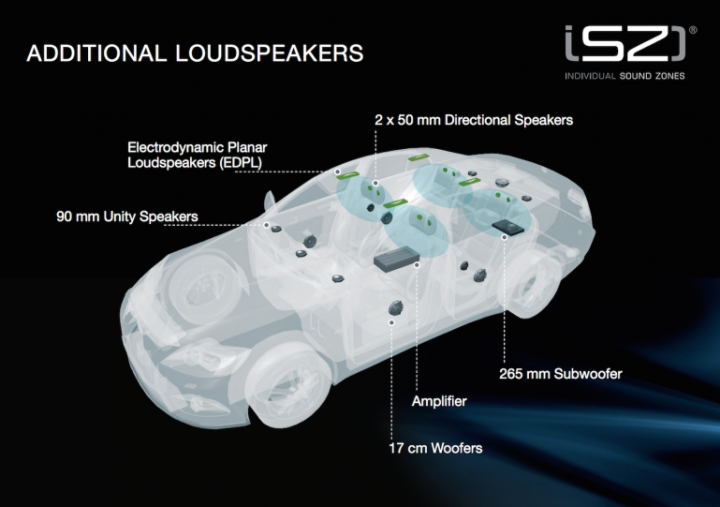
“YES!” replied everyone else in the car. The last thing the road-trippers wanted to hear was another offbeat harmonization of “Shake It Off,” but as always, driver picks the tunes.
“It’s going to be a long drive …”
At the 2015 International CES, audio manufacturer Harman made an announcement that could save you from this type of experience ever again, headphone-free.
The brand revealed a new technology called ‘Individual Sound Zones’ (ISZ) that “reduces unwanted noise while enhancing and personalizing the sounds that passengers want to hear.”
The system creates separate listening zones inside the cabin by placing small speakers in the headrests as well as directly above the occupant’s head, while upgraded signal processing works to eliminate crosstalk between sections.
Each zone features independent volume controls, and interruptions like navigation prompts and phone calls are routed only to the driver’s position.
ISZ can’t cancel out all sound signals for safety reasons, which means you might still get a little bit of Ariana Grande in your Frederic Chopin. But by customizing the passenger zones, Harmon’s system reduces sonic clutter for an experience that the company calls “the ultimate personalized car audio experience.”
The further improve the audial driving experience, Harman debuted a new noise-canceling solution called HALOsonic.
The technology dampens both road and engine noise by projecting cancellation frequencies through the vehicle’s speakers, with in-cabin microphones constantly scanning and refining the effects.
Harmon also offers a product called Electronic Sound Synthesis, which amplifies the engine note both inside and outside the vehicle.


